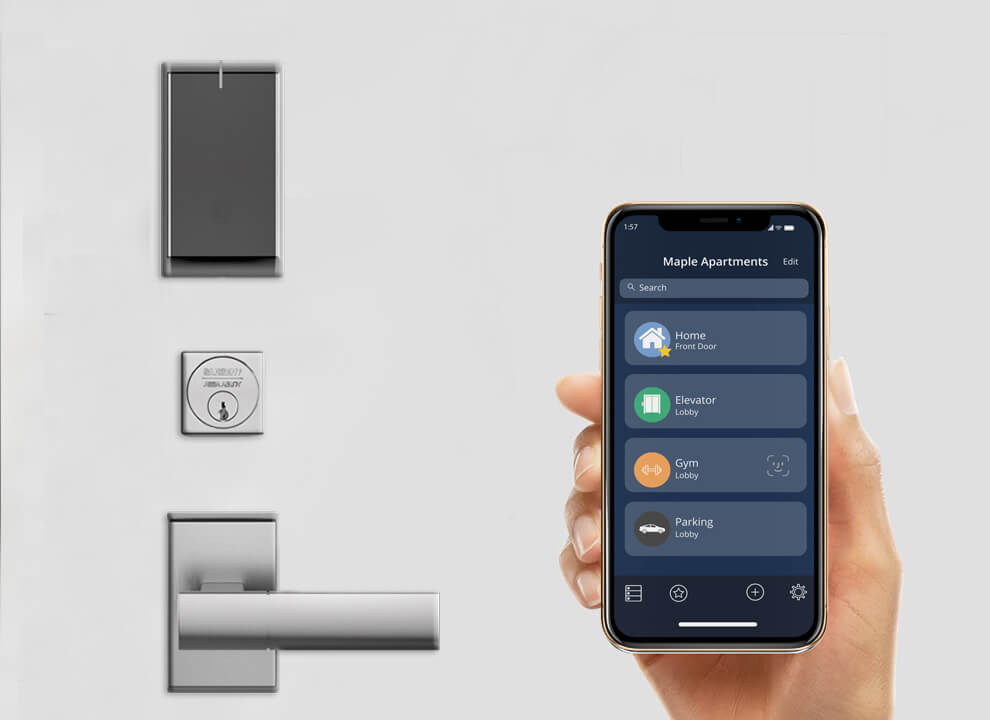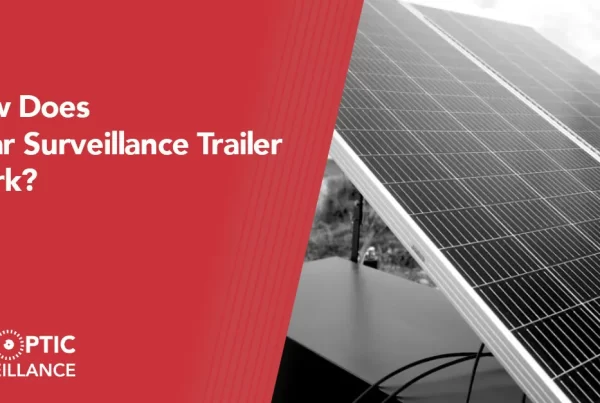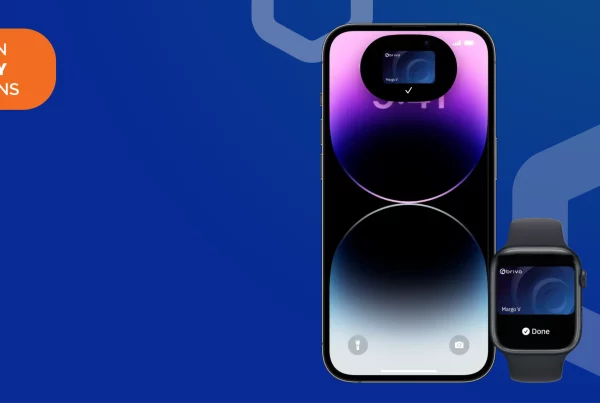Both advantages and disadvantages of proximity card readers for access control
For many access control systems, proximity readers are a common option. Yet, what exactly is a proximity card reader and why would you need one? The first security measure visitors come across while trying to enter a facility when it comes to access control is a door entry reader. The user must have an approved proximity card on them in order to enter via a proximity card reader. With authorization data inscribed on the cards, proximity cards and readers connect wirelessly using RFID (radio frequency identification).
As proximity readers can be configured to fulfill a broad range of requirements, they are an excellent choice for commercial building security. It’s crucial to comprehend the many reader types available as well as the potential advantages and disadvantages of a proximity card reader system before establishing an access control system with proximity card readers in your area.
Table of Content: Proximity Card reader system
Get help with your key Proximity Card Reader System today
Different proximity reader types
Although though many proximity readers share a similar appearance, how they operate depends on their power source and how they interface to the access control system. For access control, there are four standard types of proximity card readers. Knowing which form of proximity card reader offers your area the most security is crucial when installing them.
Weigand readers and RS-485 readers are two examples of wired proximity readers, which are the most popular kind of proximity card reader used in commercial access control applications. They are compatible with practically any kind of access control system since they communicate via the Wiegand protocol. Wiegand protocol, on the other hand, has been in use since the 1970s, making it more vulnerable to hacking. Choose proximity readers with advanced end-to-end encryption and extra anti-tampering measures, such as the RS-485 readers from Houston Security Solutions, to guarantee proximity readers employing a Wiegand protocol are secure. These common prox card readers occasionally come with additional features and typically support a combination of RFID, Bluetooth (BLE), and NFC formats.
Wireless proximity readers — Wireless proximity readers don’t require wiring back to a control panel because they are battery-powered. They are most frequently utilized in big deployments in lodging facilities and apartment buildings where it would be prohibitively expensive to wire every door. For them to interact with a central control panel that is connected to the Internet, localized access points are often needed all around the building. One drawback of this kind of proximity scanner is that to maintain optimal operation, batteries must be checked and replaced.
Freestanding proximity readers — Because they are not connected to a control panel, the usefulness of these independent card readers is restricted. They frequently have a PIN pad since they can’t be operated or programmed remotely without a data connection, which is why they frequently have one. Since they store private user and credential information locally, when put on the unprotected side of the door, they are also vulnerable to tampering and hacking. The greatest applications for these proximity card readers are modest interior installations without the requirement for additional security measures, such a supply closet.
Proximity readers that are IP-connected — This more sophisticated form of reader lacks a direct link to the controller. For a more automated, adaptable security system, they may be completely linked into IT systems thanks to the Ethernet connection. To guarantee that your place is safe, it’s crucial to remember that this kind of technology must adhere to strict cybersecurity and encryption regulations. Your building’s security is also at danger if your IP is hacked.
Proximity card readers for access control: benefits
The popularity of proximity readers in workplaces and business buildings throughout the world is for good reason. Secondly, they are quite easy to put into practice. Although proximity card reader technology has been around for a while and is widely used, once they are deployed there is no need for training or ramp-up time.
Proximity cards (also known as prox cards) can also provide a contactless access experience. Unlike swipe cards, prox cards don’t need to be inserted into or swiped through a reader to work. The proximity card has a metallic antenna coil embedded inside that holds encoded data. The proximity card readers use an electromagnetic field to detect nearby cards and transmit data through the reader to the access control panel. If the card is authorized, the control panel sends a signal back to the reader to trigger a door unlock. The proximity technology can also be used in key fobs, clamshell cards, or stickers. This is great for implementing touchless technology to create healthier spaces.
Proximity card systems may give organizations data analytics for their area and the ability to track entrance behavior, depending on the access control software. The most adaptable platform is a cloud-based access control system, like Houston Security Solutions, which gives administrators and facilities teams virtual access to administer their access control system from any location.

Concerns and security issues with proximity card readers
Your proximity card reader needs to be trustworthy and safe, just like any solid physical security measure. It can seem wise to employ a well-known legacy access control system, but there are several security flaws to be mindful of given how long this technology has been in use. There are a startling amount of weaknesses when considering how a proximity scanner may be breached. Using a device bought online, for instance, nearly anybody might compromise a HID proximity card reader. It’s time to update if your proximity card reader possesses any of the following flaws.
Inadequate read range refers to the reader’s ability to recognize close credentials at a certain distance. Each device’s read range will be different. When establishing a security system, distance is a crucial factor. For instance, a front door or turnstile gate should have a smaller read range so that users must approach the reader closely to request an unlock. By doing this, tailgating incidences will be reduced. The read range must be greater for parking garage deployments, however, to take into account the size of the vehicles and the ability of the user credentials to interact with the reader from within the car.
Hardware with a hackable backend – Unfortunately, thieves who wish to steal data and damage businesses frequently target door entry readers. While installing new readers, backward compatibility is one thing to consider. Even the most sophisticated proxy card readers may be vulnerable to security flaws if your security system is operating on obsolete legacy backend hardware. The adoption of a system with end-to-end encryption at every level of communication and other safeguards against hardware hacking is one technique to tackle this on a hybrid access control architecture.
Locally stored data – Certain proximity readers save data locally, which makes it simple for prospective thieves to access. This frequently disregarded security vulnerability may leave your entire system vulnerable. The card readers from Houston Security Solutions are configured as a blind proxy between the credential and control unit, making them useless to hackers trying to gain access. Moreover, they feature built-in tamper-alerts.
No fail-safes or backups — A backup power source is necessary to keep your system operational in the event of a power or Internet loss. Without a failsafe mechanism or backup alternative, individuals may be shut out of the building or the doors might be left unlocked without your knowledge. Make sure your system has offline capabilities, a mechanism to connect to a different power source or backup battery, and a way to avoid being locked out in an emergency.
Key cards are simple to duplicate — Key cards are among the most popular forms of access for enterprises globally. Certain key fobs and cards, however, constitute a significant security concern. Using a $10 device, it is simple to duplicate many popular key cards, such as those used with low-frequency HID proximity card scanners. Look for solutions that provide more secure prox cards instead. Since DESFire EV1 128-bit AES cryptographic cards provide the best encryption and security currently available and have no known publicly accessible weaknesses, Houston Security Solutions uses them.

Installation, financing, and planning for proximity card readers
The selection of the ideal access control system for your business involves a surprising number of considerations. It is advisable to consult an expert access control installation when looking for a proximity card reader that will work for your building to guarantee that your readers are compatible. Before installing new readers, an access control installer will take a look at the locks on your doors, the wiring required for the system, the amount of space you have, and other desirable security features.
Locking devices for doors
Not all door locks and access control suppliers can work together. However most proximity card readers are made to function with the electric, wired locking systems used in most business buildings. You may find out what kind of business door locks you presently have and which security systems are suitable with your access control system installer. If you’re building from scratch, seek advice from a security professional to install the finest door locks in your structure.
Dimensions for mounting prox readers
Before proposing a device, an access control specialist will examine a number of factors, including the available space for installing the necessary prox reader. Certain proximity readers might not fit in your location, particularly if your entryway is narrow. Aspects of aesthetics should also be taken into account right now. The current HID proximity readers might appear clunky and out of date in a contemporary office setting. Award-winning Houston Security Solutions Smart Readers feature a sleek, sophisticated appearance that can be installed flush with the wall to seamlessly integrate into your environment. The readers from Houston Security Solutions are available in a Regular size and a smaller Mullion version for installation that takes up less room.
Structural wiring
One of the main issues with updating an existing access control system is having to tear out and replace all the outdated wire in order to make room for the new hardware. The fact that proximity card readers like Houston Security Solutions’ Smart Readers employ conventional wire design is one of its advantages. This implies that installation will be simple and quick and won’t involve ripping out the old wiring. While planning your access control installation, it’s crucial to engage with an integrator to understand the entire scope of the job because not all proximity scanners utilize standard wiring.
Proximity card reader cost
A budget should be in mind before beginning an access control system. The price of your system will vary depending on your current infrastructure, the number of readers you require, and the credentials you select. Remember that maintaining key cards may be expensive, and you’ll need to order replacement cards often. Choose a future-proof product to get the most out of your proximity card reader access control system. You’re less likely to need to upgrade the system every few years in order to stay up with the most recent security advancements if you have a more flexible reader that can accept various access methods (like mobile credentials) and link to other building systems.
Is a proximity card reader system the best option for your facility?
For business settings that require practical, contactless access control, proximity card readers are a great option. You may use contemporary access control systems to safeguard office areas, lobby turnstiles, and parking garages using a proximity reader system.
Consider what matters most for the safety of your building before choosing a solution. Make sure the proximity readers you select can accept flexible credential types if you wish to use prox cards and mobile access control credentials together. In addition to providing handy mobile credentials and encrypted DESFire EV2 access cards, Houston Security Solutions is backwards compatible with numerous legacy access cards. This implies that you won’t need to issue new prox cards to your complete corporation whenever you install Houston Security Solutions Smart Readers or an intercom reader system.
Security professionals also advise using cloud-based access control systems since they are frequently more secure and simple to handle from a distance. The cloud-based software from Houston Security Solutions guarantees a smooth transition thanks to its easy connection with top directory management solutions to sync users automatically. Also, administrators may rapidly grant or revoke credentials at any moment using the remote platform.
Plan a site visit with a security professional if you’re considering installing a proximity card reader access control system for your building. They’ll carry out a security check, assess your location, and decide which system and where are ideal for you. Get started with a personalized pricing quotation by getting in touch with Houston Security Solutions’ security professionals now.
Upgrading your access control system
The addition of smartphone access control to your security system is fantastic, but what if you still want to use key cards? You can have it all with Houston Security Solutions’ state-of-the-art smartphone access control solution. The cutting-edge cloud-based solution is built for maximum interoperability and flexibility to fulfill your specific security requirements.
In order to safeguard your company, Houston Security Solutions readers may be set up to enable unlock requests made via the company’s mobile app, the Apple Watch app, tablets that already have the app loaded, bespoke key cards and fobs, or a Mobile Pass..
To make cards exceedingly difficult to copy or duplicate, Houston Security Solutions provides DESFire EV2 128-bit AES cryptographic key cards with digitally signed identities.
While operating in hybrid mode with a legacy card system, MIFARE RFID cards are also supported for backwards compatibility with legacy RFID systems.
You may interact with other tools and apps, such as VMS and surveillance software, using an open API platform like that provided by Houston Security Solutions.
Each Houston Security Solutions client has the option to display just the data that is most pertinent to them thanks to mobile-optimized bespoke dashboards, regardless of whether they are managing a worldwide security network on many displays or monitoring a single entry on a tablet or phone.
Contact Houston Security Solutions to see how our smartphone access system can seamlessly connect with your current set up if you want a keyless access system that delivers scalability, dependability, security, and interoperability.

Houston Security Solutions Access Control Installers Service Areas
Access Control System & Installer in Houston, Texas
Top Houston access control contractors, installers, and companies
Learn MoreAccess Control System & Installer in Baytown, Texas
Top Baytown access control contractors, installers, and companies
Learn MoreAccess Control System & Installer in Deer Park, Texas
Top Deer Park access control contractors, installers, and companies
Learn More





